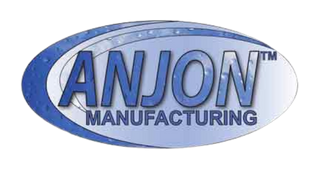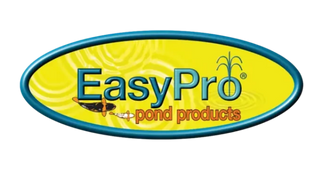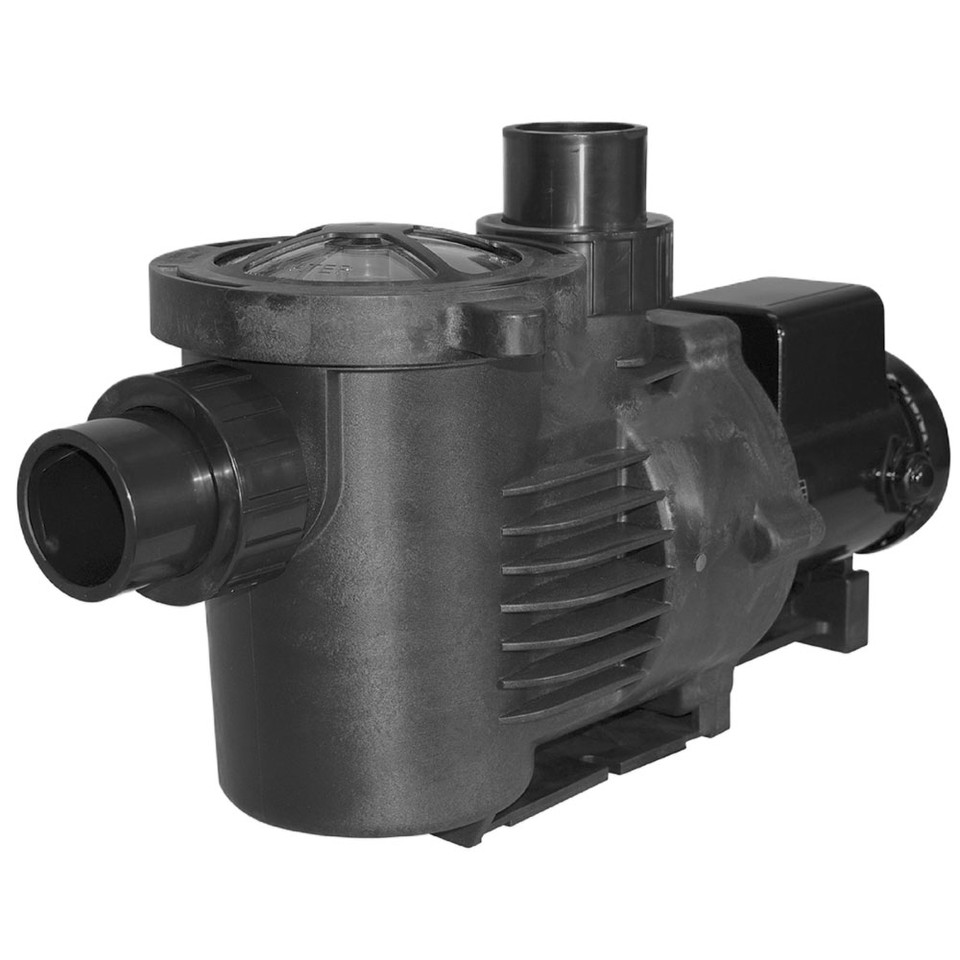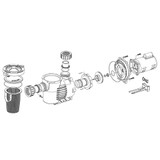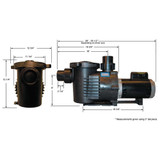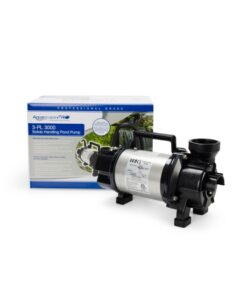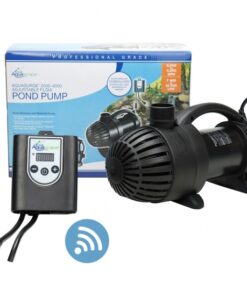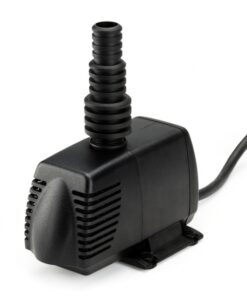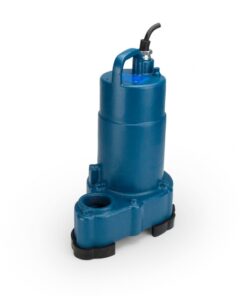|
Model AP1/2-HF
|
Model AP3/4-HF
|
Model AP1-HF
|
Model AP1-1/2-HF
|
| Ideal Use |
Out of Water |
Out of Water |
Out of Water |
Out of Water |
| Application |
Fresh Water or Salt Water* |
Fresh Water or Salt Water* |
Fresh Water or Salt Water* |
Fresh Water or Salt Water* |
| Motor Type |
Self-Priming Centrifugal |
Self-Priming Centrifugal |
Self-Priming Centrifugal |
Self-Priming Centrifugal |
| Approximate Dimensions |
35.5″L x 12.75″W x 15.25″H |
35.5″L x 12.75″W x 15.25″H |
35.5″L x 12.75″W x 15.25″H |
35.5″L x 12.75″W x 15.25″H |
| Max Head Pressure |
38 Feet |
41 Feet |
45 Feet |
54 Feet |
| Max Flow |
8,460 GPH @ 3 FoH |
10,260 GPH @ 4 FoH |
12,360 GPH @ 6 FoH |
14,160 GPH @ 6 FoH |
| Intake & Discharge Ports |
3″ Ports w/ Unions Included |
3″ Ports w/ Unions Included |
3″ Ports w/ Unions Included |
3″ Ports w/ Unions Included |
| Motor Size |
1/2 HP |
3/4 HP |
1 HP |
1-1/2 HP |
| Motor Enclosure |
Open Drip Proof (ODP) |
Open Drip Proof (ODP) |
Open Drip Proof (ODP) |
Open Drip Proof (ODP) |
| Revolutions per Minute (RPM) |
3,450 RPM |
3,450 RPM |
3,450 RPM |
3,450 RPM |
| Voltage & Cord Options |
115V w/8′ Cord
230V No Cord |
115V w/8′ Cord
230V No Cord |
115V w/8′ Cord
230V No Cord |
115V No Cord
230V No Cord |
| HZ/Max Amps |
50/60 Hz, 8.07 Amps |
50/60 Hz, 9.87 Amps |
50/60 Hz, 13.5 Amps |
50/60 Hz, 8.46 Amps |
| Warranty |
3-Year Fresh Water Applications
1-Year Salt Water Applications |
3-Year Fresh Water Applications
1-Year Salt Water Applications |
3-Year Fresh Water Applications
1-Year Salt Water Applications |
3-Year Fresh Water Applications
1-Year Salt Water Applications |
*You can purchase salt water kits at the time of pump purchase, and you need them when operating with salt water
|
Model AP2-HF
|
Model AP3-HF
|
Model AP5-HF
|
| Ideal Use |
Out of Water |
Out of Water |
Out of Water |
| Application |
Fresh Water or Salt Water* |
Fresh Water or Salt Water* |
Fresh Water or Salt Water* |
| Motor Type |
Self-Priming Centrifugal |
Self-Priming Centrifugal |
Self-Priming Centrifugal |
| Approximate Dimensions |
35.5″L x 12.75″W x 15.25″H |
35.5″L x 12.75″W x 15.25″H |
35.5″L x 12.75″W x 15.25″H |
| Max Head Pressure |
62 Feet |
63 Feet |
72 Feet |
| Max Flow |
15,840 GPH @ 10 FoH |
17,940 GPH @ 14 FoH |
19,800 GPH @ 17 FoH |
| Intake & Discharge Ports |
3″ Ports w/ Unions Included |
3″ Ports w/ Unions Included |
3″ Ports w/ Unions Included |
| Motor Size |
2 HP |
3 HP |
5 HP |
| Motor Enclosure |
Open Drip Proof (ODP) |
Open Drip Proof (ODP) |
Open Drip Proof (ODP) |
| Revolutions per Minute (RPM) |
3,450 RPM |
3,450 RPM |
3,450 RPM |
| Voltage & Cord Options |
230V No Cord |
230V No Cord |
230V No Cord |
| HZ/Max Amps |
50/60 Hz, 10.74 Amps |
50/60 Hz, 13.6 Amps |
50/60 Hz, 17.6 Amps |
| Warranty |
3-Year Fresh Water Applications
1-Year Salt Water Applications |
3-Year Fresh Water Applications
1-Year Salt Water Applications |
3-Year Fresh Water Applications
1-Year Salt Water Applications |
*You can purchase salt water kits at the time of pump purchase, and you need them when operating with salt water
PerformancePro ArtesianPro High Flow Water Pump is a centrifugal external “out-of-pond” pump.
How It Works
When you turn on the electric motor, it uses centrifugal force to generate the velocity of the water. The water then flows into the strainer pot from the water source, filtering out debris. Water flows to the impeller, which turns kinetic energy into pressure. This keeps the high flow water pump working and water flowing out of the discharge port, creating a continuous flow for your water feature.
Self-Priming Pump
PerformancePro ArtesianPro is a true self-priming high flow pond pump. Made to work at different heights up to 9 feet above the water and different lengths horizontally. Operating at maximum suction lift height may negatively affect the pump’s overall performance.
Turn on the high flow pump and wait for 3 minutes. If water doesn’t enter the priming pot, try using a rubber flap swing check valve. Put the valve close to your water source to keep the pressure steady and make the flow start faster. The best location can even be underwater when possible, as this can provide an air-tight fit even without PVC adhesive.
Some swing check valves have true union connection fittings that offer easier access for cleaning when needed. Never use a spring-loaded check valve as it will reduce or stop flow.
Installation Guide
Pump Location: position the high flow water pump low and near the source water to prime quickly and achieve optimal performance.
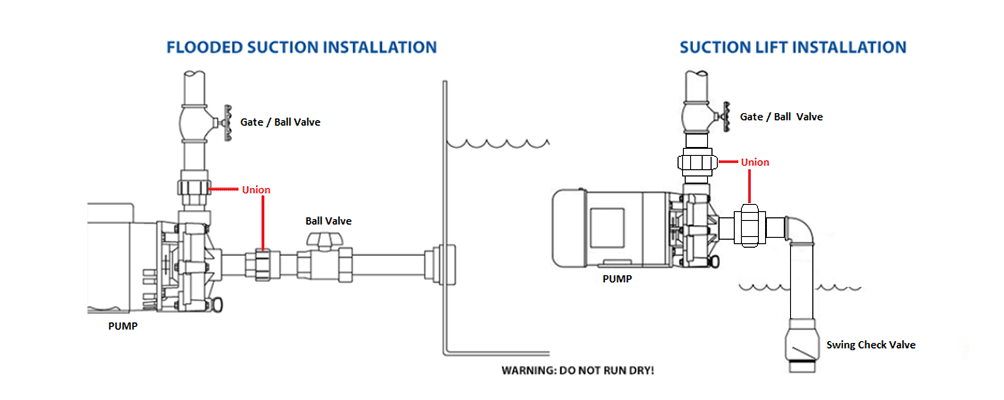 *Actual high flow water pump not shown in diagram.
*Actual high flow water pump not shown in diagram.
Flooded Suction
• Ideal setup as it does not require priming.
• Ball Valve installed before and after the pump for ease of maintenance.
If the water source is higher than the pump, opening the supply valve will fill the pump with water. This applies to flooded suction systems. We recommend opening the strainer pot lid on both flooded and non-flooded systems.
Add water and clean the lid O-ring. Finally, close the lid tightly before starting.
Once you fill the priming pot and open the supply valves (if present), your pump is ready to prime. Turn the motor on by plugging in the unit or switching on the power supply.
Priming will vary in length. Water should continue flowing into the basket as the pump passes the priming process. The priming process should not take longer than 15 minutes.
The high flow pump should never run dry. If the water stops flowing into the strainer pot, shut the pump off immediately and see the manual for Troubleshooting Tips.
When you start the pump, the water level in the housing should decrease rapidly. Only a small amount of water should enter the pump within 3 minutes. There is no need to be alarmed as this is normal. If no air leaks, the water flow will slowly increase, and the pump will work at its best.
Suction Lift
• Suction lift can be installed with a Swing Check Valve.
• We recommend installing the Check Valve below the water level to avoid dry-running the unit and to aid in priming
The pump ports are 3” slip on both the inlet and discharge ports. The 2″ or 3″ fittings included with your pump should connect to PVC or flex pipe plumbing.
All plumbing lines should be self-supported and properly aligned. This will prevent undue stress on the housing and fittings. We recommend using a good primer and PVC cement to glue the pipe to the tailpiece fittings.
To stop back-flow or reverse rotation, use a ball or swing check valve when the pump is below water level. A ball valve will supplement a swing check valve and allow flow adjustments.
FILL THE PRIMING POT WITH WATER BEFORE STARTING THE PUMP.
Be sure your installation location is no higher than 9 feet above the water surface level. We recommend using a 3″ tube.
It is best to avoid adding too many fittings or strainers. This will prevent the water flow from slowing down and the pump from taking longer to start. Refer to the Pump Operation information in the manual.
When determining pump placement, it is important to consider the distance and height from the water source. Place the pump no more than 9 feet above the water source to ensure a good prime time. Positioning is also important to maintain the pump’s ability to stay primed and minimize cavitation.
Recommended Maintenance
Clean the strainer basket in the priming pot once a week. If there is a lot of debris in the area, clean it more often.
Seals and Bearings Pump seals and bearings experience normal wear and degrade over time. Changing pump seals every 3 to 4 years is recommended for fresh water applications and every year for salt water applications. The frequency of replacement will be determined by environment and water quality.
If leakage is noticed, check troubleshooting tips and contact us for parts and advice. If the pump becomes abnormally noisy, this could be a sign that the bearings are failing and need replacement
Winterization
Cold temperatures expand water, damaging the pump, plumbing, and other parts, leading to expensive repairs. Winterizing your pump is necessary if freezing temperatures occur in your geographic area for extended periods of time. If it sometimes gets very cold and may go below freezing, follow the manual’s winterization steps to keep your pump safe.
How to Read a Water Pump Flow Chart
The Flow Chart helps you figure out how much water your pond needs and which high flow water pump is best for it.
Start by calculating your pond’s specific water-flow requirements, measured by Head Pressure (Feet) and Gallons Per Hour (GPH) water flow.
Flow Chart
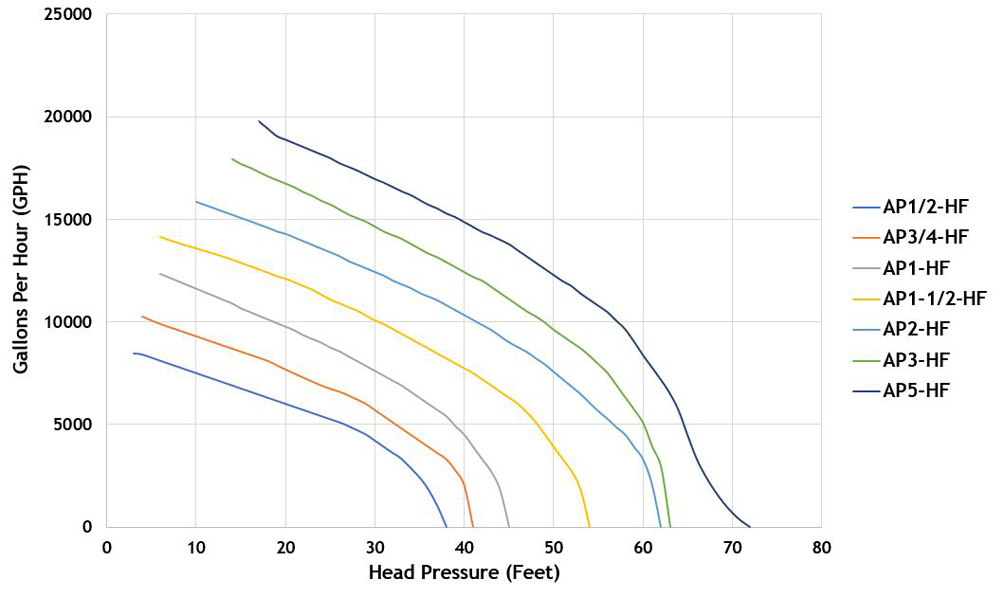
Aim for the Middle of the Curve:
Plot your calculation on the Flow Chart. Select a pump that is in the middle third of the pump curve. Avoid being too close to either axis. Pumps that fall on the fringes of the curve will not work as efficiently for your application and will be pushed to their operating limits, reducing their life span.
Other Considerations When Choosing a Pump:
It’s Better to Oversize than Undersize: You are better to slightly oversize a pump than to undersize. When oversizing, you can always install a ball valve to reduce the water down to your desired flow.
Check Your Other Equipment: Choose a pump that does not exceed the indicated maximum flow rate on your filter or water feature. Also, be sure the tubing you select can handle the flow rate of your pump.
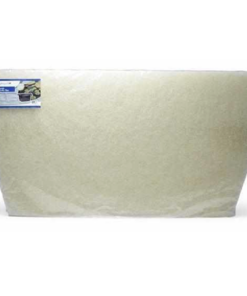 Aquascape Classic Series Grande BioFalls® Filter Mat (MPN 29078)
1 × $119.99
Aquascape Classic Series Grande BioFalls® Filter Mat (MPN 29078)
1 × $119.99 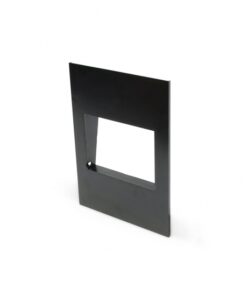 Aquascape Signature Series 8.0 Pond Skimmer Weir Plate (MPN 29213)
1 × $42.99
Aquascape Signature Series 8.0 Pond Skimmer Weir Plate (MPN 29213)
1 × $42.99 




